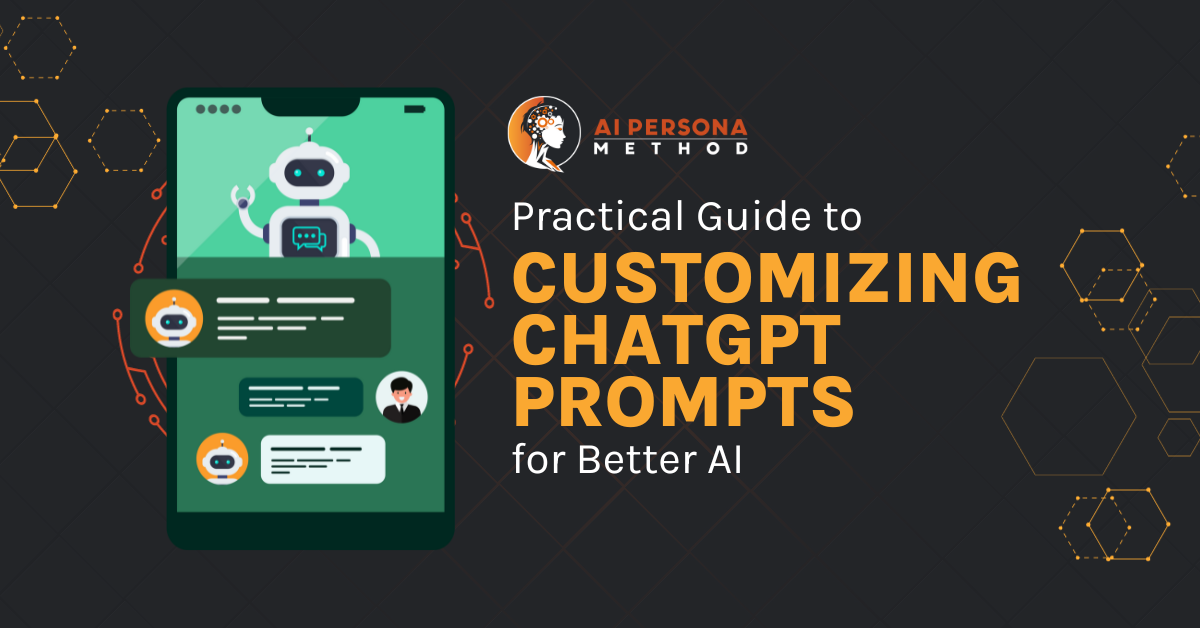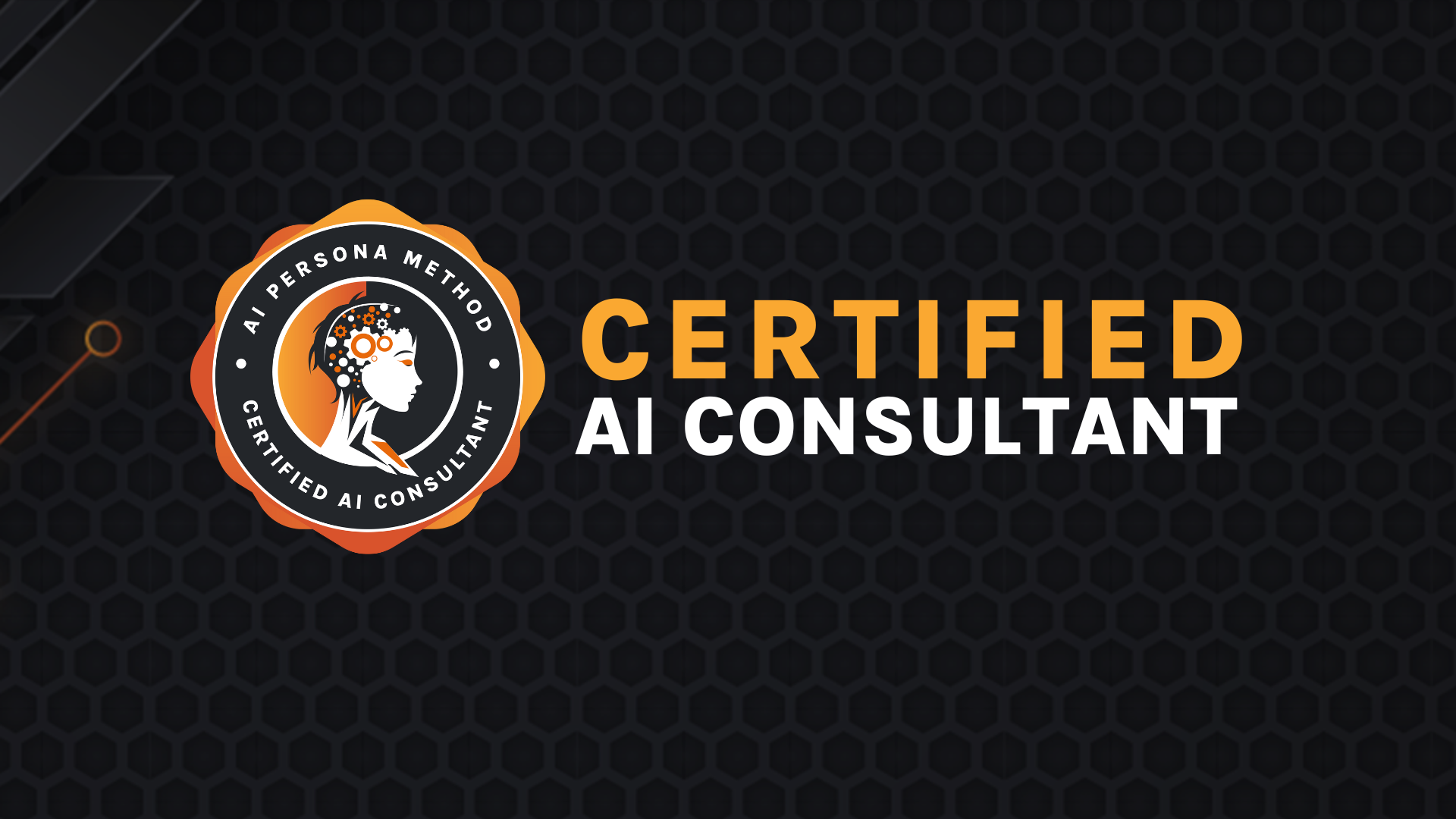Ever tried customizing ChatGPT prompts? It’s like learning a new language, one full of potential and creative possibilities.
Just imagine having the power to guide an artificial intelligence tool to generate responses exactly how you want them! Sounds magical, doesn’t it?
In my company, we’ve seen the magic unfold as we worked with customizing ChatGPT prompts. I remember our first attempt at crafting prompts – filled with curiosity and excitement.
It wasn’t always smooth sailing though. Crafting effective prompts felt akin to threading a needle in pitch darkness sometimes but that’s where the real game-changer was – understanding each nuance, refining instructions until they were just right.
You see folks; it isn’t about mastering code alone – it’s more about speaking the AI’s language effectively. The results? Responses are so on-point that they leave you awestruck!
Table Of Contents:
- Understanding ChatGPT and Its Language Model
- The Art of Crafting Effective ChatGPT Prompts
- Custom Instructions Feature in ChatGPT
- Best Practices for Customizing Prompts
- Using Custom Prompts for Various Applications
- Enhancing Model Performance through Prompt Customization
- FAQs in Relation to Customizing Chatgpt Prompts
- Conclusion
Understanding ChatGPT and Its Language Model
The heart of OpenAI’s groundbreaking tool, ChatGPT, is a complex language model developed with an extensive amount of data. This AI tool takes the context provided in your prompt and generates responses that are surprisingly human-like.
A key aspect to grasp about this chatbot’s workings lies within its intricate language model. At the core, it employs large amounts of text data to generate relevant responses. Think of it like a well-read scholar; having read numerous books allows them to converse on many subjects intelligently.
To fully comprehend how you can guide ChatGPT prompts effectively for any subject matter or project context, understanding this underlying mechanism is vital. It lets us appreciate why specific inputs lead to certain outputs and enables us to tailor our interactions accordingly.
This understanding becomes even more important when we realize that ChatGPT isn’t just another fancy piece of tech – it’s used across various industries for multiple applications ranging from creating marketing copy all the way through scripting podcasts. If leveraged correctly, this powerful AI tool can truly transform how we approach content creation in myriad ways.
Here‘s an insightful beginner’s guide I recommend if you’re keen on diving deeper into what makes these language models tick.
The Art of Crafting Effective ChatGPT Prompts
When it comes to creating ChatGPT prompts, the magic lies in specificity and structure. Would you prefer to be guided in a more precise way, such as being given step-by-step directions, or just generally told to go north? The answer is pretty clear.
Leveraging Specificity in Prompts
In order for your AI tool to generate responses that are accurate and relevant, being specific with your prompts is crucial. Instead of writing “Write a social media post,” write a more specific prompt such as, “Write a short motivational Instagram caption about checking off your to-do list targeted for busy CEOs.” This will enable ChatGPT to generate responses that are both accurate and relevant, maximizing its potential as an AI language model developed by OpenAI.
This approach allows ChatGPT users to make use of its full potential as an AI language model developed by OpenAI. It helps improve prompts’ effectiveness drastically by producing more quality responses aligned with our end goal.
Importance of Structure in Prompts
A well-structured prompt often includes context, a question, and keywords. This trifecta acts as a roadmap guiding ChatGPT on what exactly we need from it.
Taking time to create good prompt structures leads us closer to getting accurate results akin to efficient code writing.
Just wrapped up another session teaching how powerful structuring can be.
If there was one takeaway here: never underestimate the power of specifics. By harnessing these strategies effectively within our custom instructions feature at my company – AI Persona Method -, not only does it allow content creators more control over their marketing copy but also enables generating precise outputs even when dealing with large amounts of data.
So remember: Be specific. Get structured.
Custom Instructions Feature in ChatGPT
The ‘custom instructions’ feature, recently launched by OpenAI for ChatGPT, offers a powerful tool to help shape the chatbot’s responses. By creating a preface for your prompts with specific instructions, you can guide ChatGPT more effectively toward generating desired outputs.
This game-changing update allows users to tailor their interactions with the AI model developed by OpenAI. It lets them dictate not just what they want but also how they want it delivered, making sure that the end goal of user interaction is met accurately and efficiently.
Beta Stage Insights and Benefits
In its beta stage, this custom instructions feature has already shown promising results across various sessions and prompt styles. The exciting part? It even includes support for plugins.
For example, as an AI consultant using my company’s proprietary method – AI Persona Method – I’ve seen first-hand how this new addition can enhance output responses from our customized marketing copy projects. With clear guidelines set at the beginning of each session, we have been able to get more quality responses tailored specifically to our brand voice or project context.
Navigating Custom Instructions Effectively
To use these custom instructions most effectively though requires some level of expertise about language nuances and script format specificities within ChatGPT’s text generation process. With the right expertise and attention to detail, the results of using custom instructions can be highly rewarding.
Revolutionizing Content Creation Process
This innovative approach takes content creation via artificial intelligence up several notches. Be it website copy or podcast scripts; with well-crafted instruction boxes guiding your prompts along every step of the way – there’s a whole new world of possibilities that awaits.
Best Practices for Customizing Prompts
Customizing ChatGPT prompts is an art that requires a clear objective, consistent format, and regular updates. To maximize the effectiveness of your AI tool, be sure to follow best practices when customizing ChatGPT prompts.
Start with a Clear Objective:
To create effective ChatGPT prompts, it’s crucial to start with a well-defined end goal. This gives direction to your prompt engineering process and helps generate responses tailored toward achieving specific outcomes.
Maintain Consistent Format:
A consistent script format ensures smooth interaction between users and the AI language model developed by OpenAI. Consistency in structure aids comprehension, making the chatbot’s responses more intuitive for users.
Leverage Feedback Loop:
The ability of ChatGPT to learn from feedback allows us at my company, AI Persona Method, not just to produce accurate outputs but also to improve model performance over time. Regularly updating prompts based on user interactions makes our service stand apart in this field of artificial intelligence consulting.
Using Custom Prompts for Various Applications
ChatGPT’s versatility lies in its adaptability, a trait that becomes evident when we use customized prompts. Whether you’re a content creator working on a novel or looking to generate responses for specific contexts, tailoring your prompts can prove highly beneficial.
Custom Prompts in Creative Writing
The process of crafting engaging narratives often calls for inspiration and fresh perspectives. Here is where ChatGPT comes into play with the custom instructions feature. By feeding the AI model developed by OpenAI with specific cues like character traits, plot twists, or setting details, writers can get innovative ideas that are coherent yet surprising.
This approach doesn’t just offer new storylines but also helps maintain a consistent brand voice throughout your creative pieces. The blend of human creativity and artificial intelligence results in powerful storytelling tools capable of transforming ordinary tales into captivating sagas.
Generating Context-Specific Responses
In contrast to free-flowing narrative writing scenarios, there may be instances requiring context-specific responses – such as customer service scripts or website copy. Crafting effective chatbot responses involves understanding the project context and end goal while considering language nuances along the way.
A well-structured prompt is key here; it includes relevant keywords related to your subject matter while taking style settings into account. Once set up correctly, this could drastically improve model performance leading towards more accurate output responses tailored specifically to each interaction’s needs.
The possibilities offered by customizing prompts within ChatGPT extend far beyond these examples – it’s all about exploring how best this potent tool can serve individual requirements.
Enhancing Model Performance through Prompt Customization
The art of prompt customization plays a significant role in enhancing the performance of AI models like ChatGPT. To improve model performance, being specific and providing clear examples is key.
A prompt should serve as an effective guide for the AI to generate a response. Questioning someone knowledgeable in a subject with specificity can result in better answers than more general inquiries. Therefore, customizing prompts isn’t just about filling out instruction boxes; it’s akin to having a conversation with your tool.
To achieve high-quality responses from ChatGPT or any other language model developed by OpenAI, clarity, and precision are vital elements that one must keep in mind while drafting prompts.
Natural Language & Training on Relevant Data
ChatGPT thrives on natural language nuances, which makes it capable of understanding complex instructions provided within user-friendly syntaxes. Henceforth, adopting everyday lingo rather than technical jargon can result in highly relevant output responses adhering closely to our end goal.
Tips for creating custom ChatGPT prompts:
- Maintain specificity: The more detailed your request is, the better it will be comprehended by AI.
- Use real-world examples: Practical instances provide context, thus enabling efficient code generation.
- Leverage Natural Language: Communicate as if you’re speaking with another human rather than coding software.
FAQs in Relation to Customizing Chatgpt Prompts
How do I customize ChatGPT with prompts?
To tailor ChatGPT, use specific and structured prompts. Include context, questions, and keywords in your prompt for the best responses.
How do I personalize my ChatGPT?
You can personalize ChatGPT by crafting custom instructions that act as a preface to your queries. This guides the AI on how you want it to respond.
Why should you be using custom instructions in ChatGPT?
Custom instructions let you guide the AI’s behavior across sessions. It’s an effective way to get more relevant and accurate responses from your chatbot.
How do you use custom instructions?
Create a clear preface for your prompts with directives for the bot. These will instruct it on how to answer each question or engage during different interactions.
Conclusion
Mastering the art of customizing ChatGPT prompts is no small feat. It’s like learning a new language, one that opens doors to creative possibilities and better AI.
You’ve seen how specificity and structure can shape your prompt for more accurate responses. You learned about the power of custom instructions in guiding ChatGPT.
Better yet, you now understand best practices when crafting these prompts – clear objectives, consistent format, feedback use – they all matter!
The beauty? Customized prompts aren’t just for show; they enhance model performance too! More efficient code generation becomes possible with well-crafted inputs.
This isn’t magic folks – it’s using an AI tool effectively. So keep refining those prompts until you get awe-inspiring responses!



